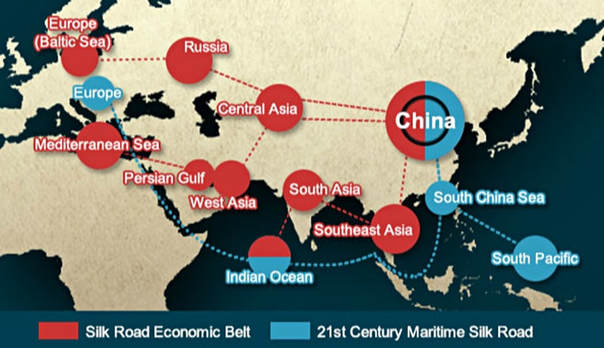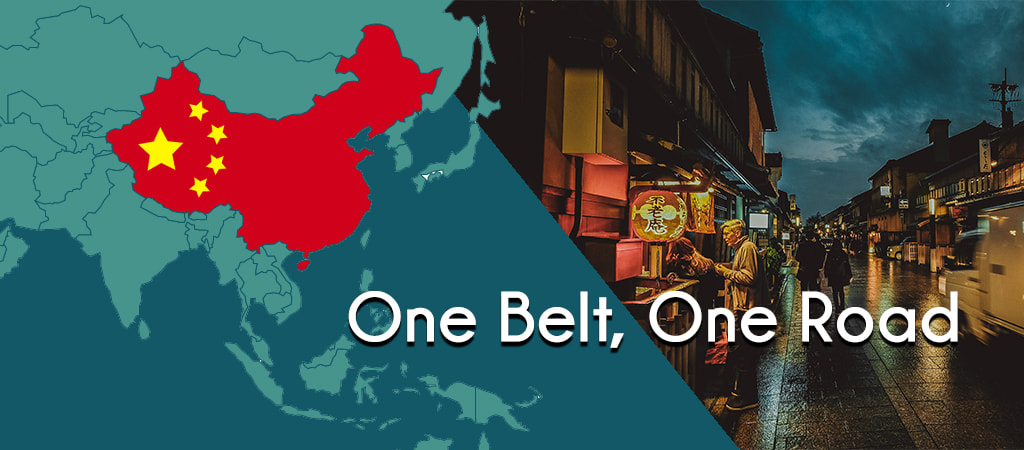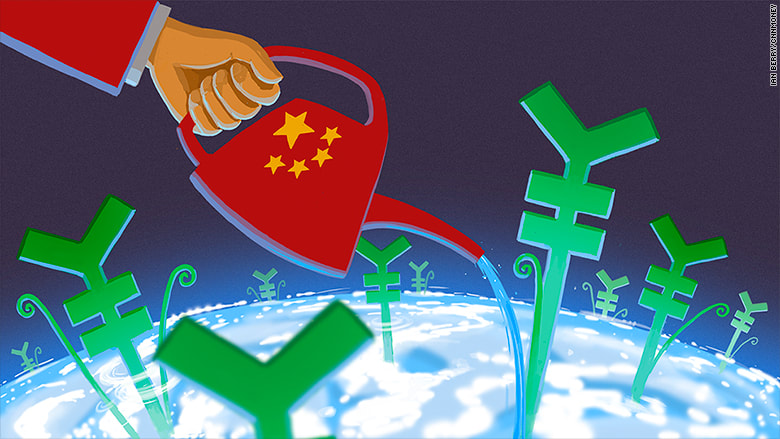ECONOMICS STUDY CENTER, UNIVERSITY OF DHAKA
|
Tahmid Hasan The Silk Road was an ancient network of trade routes established around 2000 years ago during the Han Dynasty of China. China’s imperial envoy Zhang Qian played a vital role in establishing the Silk Road, that linked China to Central Asia and the Arab world. Silk being one of the most important exports of China influenced the naming.The road influenced the development of the region for hundreds of years by creating a huge impact on trade and commerce.  WHAT IS ONE BELT, ONE ROAD? In 2013, China’s president, Xi Jinping, proposed building a modern equivalent of Silk Road by creating a network of railways, roads, pipelines, and utility grids that would link China and Central Asia, West Asia, parts of South Asia and Europe encompassing 68 countries. For celebrating the initiative, Beijing on May 14-15 hosted the Belt and Road Forum for International Cooperation which drew 29 foreign heads of state and government and representatives from more than 130 countries and 70 international organizations. The purpose of the forum was to create an effective international cooperation platform including economic cooperation, policy coordination, trade and financing collaboration, and social and cultural cooperation. The world leaders and experts gathered together to work out proper action plans for the implementation of the initiative in the areas of infrastructure, energy, trade and investment and identification of major projects. This One Belt One Road initiative basically consists of two parts. One is the Silk Road Economic Belt and the other is the 21st Century Maritime Silk Road. Silk Road Economic Belt is a road stretching from China to Europe which hosts a multitude of trade and investment projects, whereas the 21st Century Maritime Silk Road is a sea-based network aimed at investing and fostering collaboration throughout Asia and Pacific. So it’s all about building massive stuff, mostly around transport and energy: roads, bridges, gas pipelines, ports, railways, and power plants. THE IMPACT ON ECONOMIC GROWTH AND TRADE: China’s economy currently stands second in the world next to the United States. The economic aim of One Belt One Road is to correct infrastructure deficiencies and improve connections between greater Asia and Europe. Encompassing around 4.4 billion people and up to 40 percent of the global GDP the project claims it could benefit the entire world and lift millions out of poverty. 50 Chinese state-owned companies have invested in nearly 1,700 OBOR projects since 2013, said the Chinese government days ahead of the forum. The projects include the $46 billion China-Pakistan corridor, a 3,000km high-speed railway connecting China and Singapore, and gas pipelines across central Asia. The Belt and Road initiative has also entered regions as far as New Zealand, Britain, and even the Arctic. According to Xi, “Total trade between China and other Belt and Road countries in 2014-2016 has exceeded $3 trillion, and China’s investment in these countries has surpassed $50 billion. Deals worth more than $890 billion are currently underway including a gas pipeline from the Bay of Bengal to Myanmar through to southwest China and a rail link between Beijing and Germany’s Duisburg transport hub. Chinese President also pledged 250 billion dollars to South America for high-speed rail system through Brazil’s rainforest. Beijing has already finished over 1,000 infrastructure projects in Africa, including rail and highway construction. There are further plans to establish roads, bridges, and railways to link 55 African countries. With Chinese finance a Belgrade to Budapest bullet train is being built. With improved connectivity as a result of One Belt One Road, countries participating in the initiative are likely to see an expansion of trade and investment with China. For ASEAN member countries, the initiative will help address an infrastructure deficit, and lift industrial development. China has set up three financial institutions to help fund the Belt and Road infrastructure goals: the Asian Infrastructure Investment Banks (AIIB), the New Development Banks and the Silk Road Fund. The Asian Development Bank estimates that US$750 billion a year will need to be invested in Asia between now and 2020 as developing nations strive to raise their economic productivity and deal with rising urbanization. Beijing's drive and financial commitments will have a significant impact across Southeast Asia. Such improvement in the transport network will facilitate trade in countries along the OBOR route as well as could raise the GDP growth in Central, West and South Asia ranging from 0.1 to 0.7 percentage points. The total exports of countries in the OBOR could also increase by about $5 billion to $135 billion. WHAT ARE THE BENEFITS OF CHINA? China has suffered from widespread overcapacity in heavy industries such as steel, cement, and aluminum. So Mr. Xi is looking to the rest of the world, particularly developing countries, to keep its economic engine going. China is deploying hundreds of billions of dollars to create an influence around the world. Rather than following the protectionist agenda the country is literally creating a revolution in the global trade system. By building infrastructures, China is creating influence over the developing countries. "China is looking to use OBOR as a way to ship its own domestic overproduction offshore," said Nick Marro, an analyst with the Economist Intelligence Unit (EIU). The real benefits of OBOR to China could be the international dominance it stands to gain as its attempts to the vanguard of international policy and improve relations with OBOR partner countries. RISKS ASSOCIATED WITH IT? China is hardly considering the major threats associated with this project. Many key countries related to OBOR in Africa, South East Asia are prone to political and economic instability and corruption. As such these projects may easily fail in these countries putting the world economy at risk. Increasing level of state-backed funding is posing a threat to the global economy. China’s biggest state-owned commercial banks are giving loans to the government to implement the projects. And these loans are being extended to governments in risky countries to fund risky infrastructure projects. Any risk to China’s banking system is by default a risk to the global banking system. Besides Chinese projects in Venezuela, Sri Lanka and Myanmar have a very poor track record. Besides, there are some political risks rising due to this initiative. There have been protests in Sri Lanka against this initiative. Pakistani militants have threatened to create barriers in the China Pakistan Economic Corridor project. If these projects under OBOR can be properly implemented by overcoming the shortcomings the world economy would be greatly benefitted and we could see a better, sustainable world.
9 Comments
Tanjim-Ul-Islam
3/31/2018 09:50:57 pm
Nicely wriiten, bhai. It gave a comprehensive explanation about the OBOR.
Reply
Tahmid Hasan
3/31/2018 10:42:43 pm
Thank you Tanjim
Reply
Mukit Murshed
4/1/2018 11:30:44 am
Dost I really loved it. Onk comprehensive chilo work ta.
Reply
Mehedy Hasan.
4/1/2018 02:33:33 pm
very interesting and well write up.
Reply
Tahmid Hasan
4/2/2018 11:29:09 pm
Thank you sir
Reply
Rafiul Arefin Omi
4/1/2018 04:43:31 pm
A very well researched writing. Expecting to see similar analysis on the economic route that US, India and Australia are planning to create
Reply
Tahmid Hasan
4/2/2018 11:29:40 pm
Thank you bhaia. I will try to write about those too
Reply
joarder
4/2/2018 11:25:57 am
very good
Reply
Aubhik Rehman
4/16/2018 07:18:39 pm
A very well written article from a promising economics mastermind. Godspeed, my kala brother.
Reply
Leave a Reply. |
Send your articles to: |



